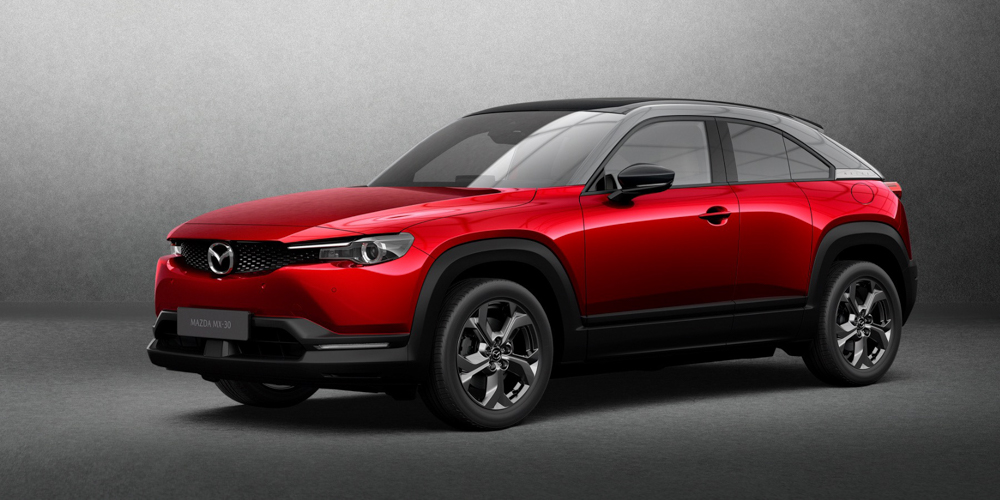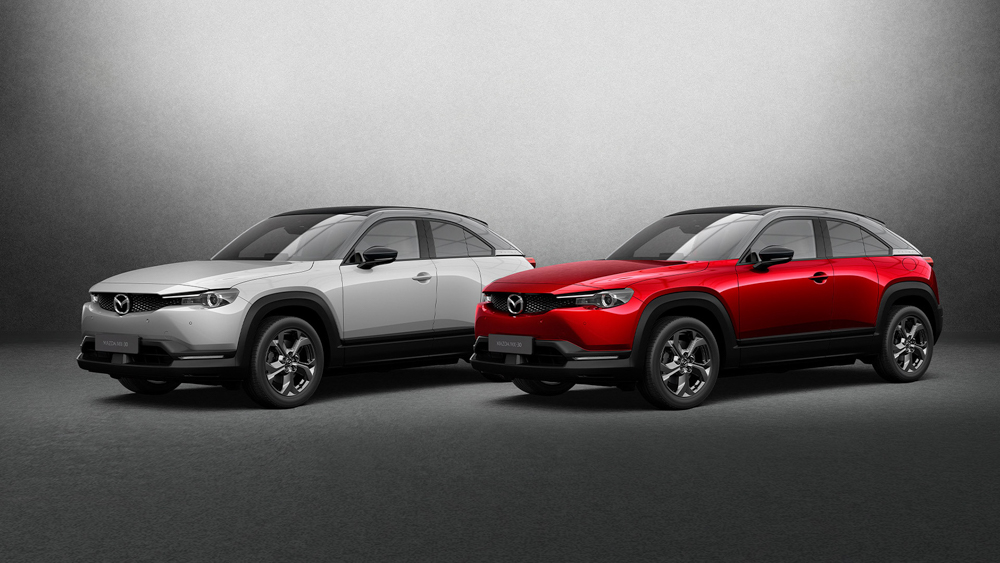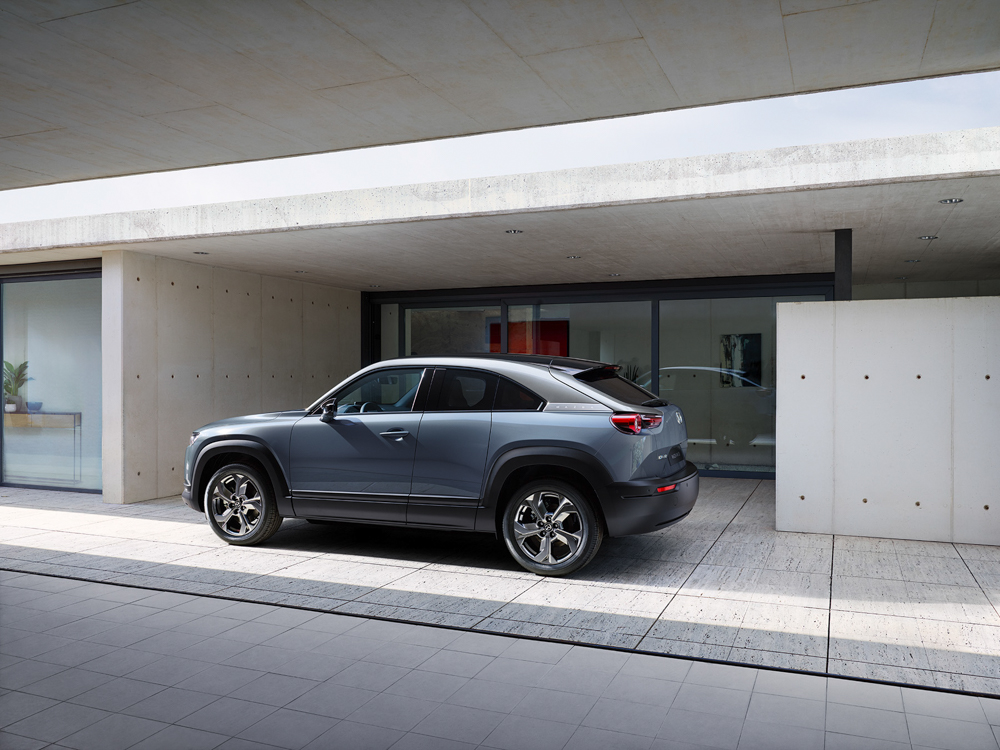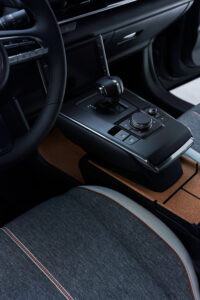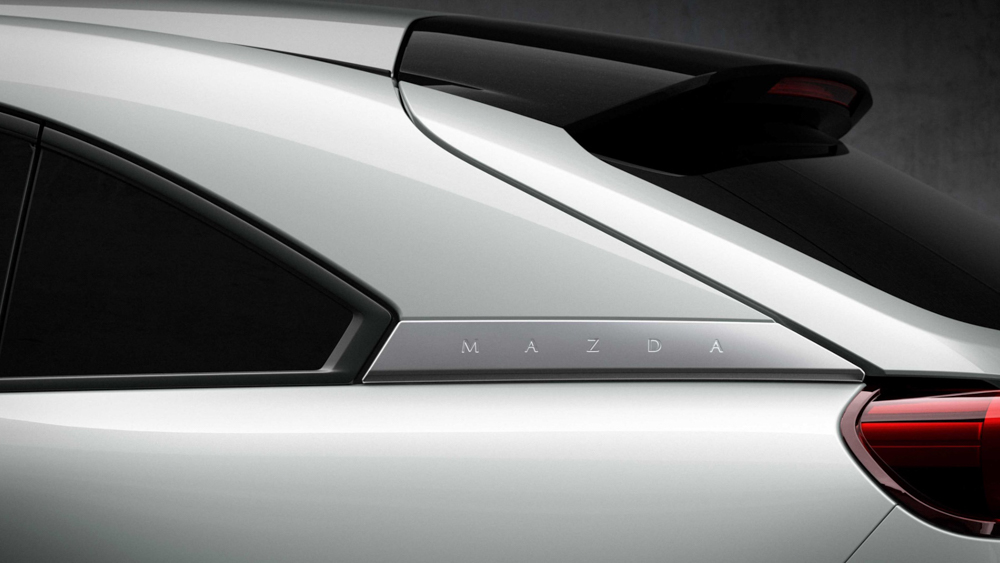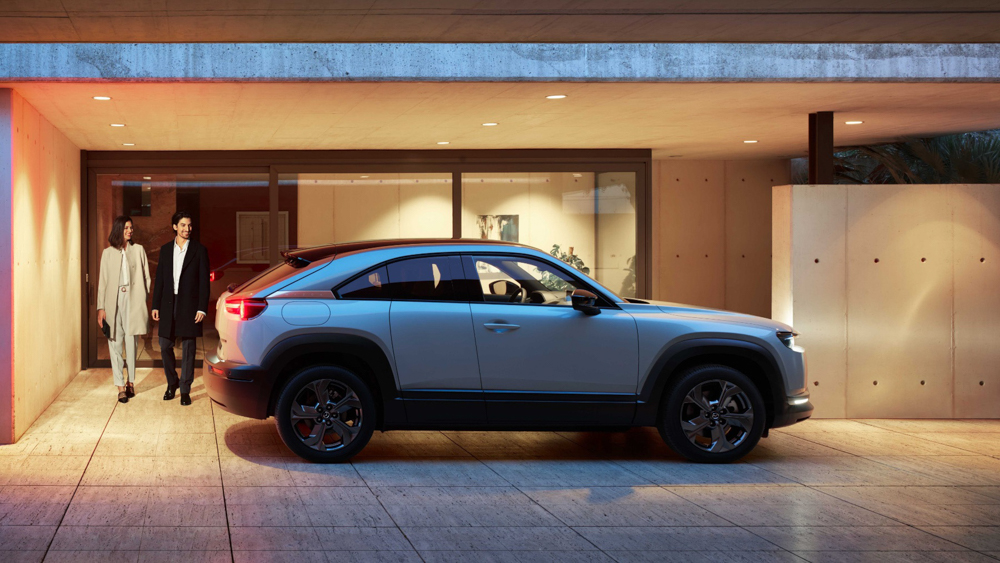REVIEW: Mazda’s First EV, the MX-30
Mazda’s MX-30 is the company’s first all electric vehicle. We dive deep into why it was built a specific way.
Honesty is one of those things that journalists like myself normally don’t have to put much thought into. Namely, because it comes naturally. But every once in a while, you’re put into a situation where candor has to take the top priority. I can start with one major component: Mazda was gracious enough to loan me their MX-30 electric vehicle for a week to review for Electric Vehicle Forums.
Continuing that honesty, I’d like to preface this post by saying that I do genuinely find EV cars to be fascinating, and I like what they are all about. Additionally, a CLK55 AMG is my daily driver, and premium fuel around the Chicagoland are currently hovering around $5.31/gallon. I genuinely have every reason to want to like this car. Also, to be honest, my trusty Canon professional lens decided this very week to run afoul. So stock images it is. Add that to the tab of IOU’s to Mazda.
But, I have to approach this car like many buyers: I’m not in tune with exactly what is needed for living with an electric vehicle. Some EV’s make that easier, but the MX-30 forces your hand. We’ll get to that in a minute, but first lets see what the MX-30 is all about.
Auto manufacturers in the US are in a position to have EV’s in their lineup. Not only from a legislation perspective, but also from a social responsibility perspective, too. Ford, Toyota, VW all have the might of their enormous portfolios to develop an EV, but Mazda always ends up forging their own path when it comes to these types of things.
In all, the MX-30 may be in existence simply to meet fleet-wide emissions ratings. But it does allow a smaller company to dip into the segment with minimal risk. Mazda is also honest with their MX-30, taking an approach to battery life that many other manufacturer’s simply aren’t ready to talk about.
A report from Car and Driver shows us that Mazda is aiming to forthright in their battery tech. Bigger batteries, Mazda claims, are actually worse for the lifecycle of a car than diesel equivalents. And it supports that theory by comparing average lifetime CO2 of a smaller battery. Keep in mind, Mazda’s lifecycle is estimated to be about 100,000 miles. It’s an interesting approach to EV’s, and their own to develop smaller capacity batteries. Keep that in mind, because the MX-30’s 100 mile range isn’t because of the car being under-developed. In fact, that range is exactly what Mazda intended.
Mazda envisions “unrestricted mobility to people everywhere,” but the MX-30 won’t be the car delivering on that promise.
Battery tech will eventually get better, but for right now Mazda’s intent to offer just 100 miles of range is a bit… concerning. Additionally, real-world tests show a max range unable to exceed 85 miles. Mazda envisions “unrestricted mobility to people everywhere,” but the MX-30 isn’t the car delivering on that promise. Mazda will be coming out with a rotary powered range extender for the MX-30 after this car’s initial launch, but no numbers have been released on the amount of extra range on offer.
As a car, it meets the expectations of Mazda’s typically high quality. It’s quiet and comfortable, especially when munching up highway miles. But a sports car this is not. The MX designation is unique as it is only shared with the MX-5, but that’s all that it and the roadster share in common. Steering feel is entirely isolated and there’s never really any feel of sportiness, even if the car moves with a decent amount of agility. But you’ll eventually find your eye creeping towards that battery gauge. Spirited driving makes it drop faster than the Ruble.
The power unit itself is perfectly anonymous, delivering zero noise and adequate momentum gains. But it’s not a torque monster like other EVs. 140 horsepower is ok, and 200 lb/ft of torque is enough. But even cars like the Spark EV deliver a whopping 400 lb/ft of torque. Since we know what EV’s can accomplish, it’s kinda disappointing to see this one miss the mark. We have to remind ourselves again that it is designed this way.
It sits at an unusual place in the market, too. For now, you can only buy one in California. But the recent emergence of entry level EVs means the MX-30 is competing with the new Volkswagen ID.4, and the established Nissan Leaf, among others. Mazda’s approach to their smaller batteries might not be fully in context to buyers either. There are ways to build a more environmentally sound EV, and Mazda claims to have found it… But some buyers might just want to spring for the longer range, because they will feel they are doing good enough by switching away from ICE all together.
One thing the MX-30 shows is that no one is going to end up in this car on accident. It’s entirely a car you have to prepare for, in more ways than one. You’re already a Mazda enthusiast when you pick this car, and there’s really nothing wrong with that. Ideally, get your house outfitted with a better charger, too. Because the charge times for 110v outlets are atrocious.
I became comfortable enough to dip into the car’s range, say about 50% charged, but all that meant was a charge time display “over 16 hours” via the on screen display. My math calculated the charging rate at 3.1 miles per hour. A Chargepoint quick charger reduces that to about 1/3rd the time. But you have to be at the charger to accomplish such a thing. So, get your charger installed at home. Many houses have 220 outlets at or near a garage so this isn’t much of a problem.
Outside of that, it does regular car things extremely well. Big sidewall balloon tires meant for higher MPG’s have a bonus of being extremely quiet and comfortable. And the interior has all the connectivity you’d ever want and need. As a car, it’s good looking, well laid out, and… normal. In a good way.
It also drives like a regular automatic, too. In its standard driving “mode” (adjusted by the paddles on the wheel), it creeps forward when letting off the brake, like a traditional automatic. Those paddles adjust the regenerative braking, by the way. Crank up the braking, and you can almost get away with driving the car and never touching the brakes once. Crank it down and it’ll simply coast for longer. It’s not a driving mode selector though, because in my experience it didn’t sharpen throttle response, at least that I could detect.
In all, I came away from the MX-30 both impressed, and a little underwhelmed. It sits at such an odd crossroads in the ever changing EV landscape, and I’m just not sure this car will have a segment other than super niche buyers.
Join the Electric Vehicle forums now!
Photos courtesy of Mazda

